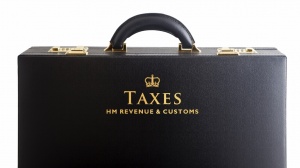Watch Out For HMRC Blowing Hot And Cold
Is HMRC applying luke-warm tests for VAT on takeaways?

A client who operates a takeaway recently found themselves the subject of an HMRC VAT investigation. HMRC has a taskforce dedicated to looking at takeaways and they decided to purchase a variety of dishes from our client's premises.
According to the taskforce, the takeaway's food should have been subject to standard VAT, specifically because they claimed the food was sold as "hot".
However, when the client brought this to my attention, I strongly disagreed with HMRC.
In particular, I took issue with HMRC's application of the tests contained within VAT notice 709/1, a section which covers the VAT treatment for anyone who prepares and supplies food and drink ready for consumption.
My argument specifically centred round whether a food was "hot or not" - a major difference as hot food is subject to standard VAT, cold food isn't.
As further background I applied HMRC's own tests, specifically to the cooking process of "seaweed" (which isn't actually seaweed, it's cooked cabbage as I'm sure you're aware!) within a Chinese takeaway.
The results were interesting, and a major lesson learnt from doing this is that HMRC clearly does not always understand how foods are prepared and, as a result, incorrect judgements about the VAT treatment can and are being applied.
Providing that you are armed with a detailed explanation to apply the facts, together with providing evidence (in this case I asked the client to send photos of each stage of the cooking and storage process) you can prove your case.
According to HMRC's rules on whether takeaway food should be subject to standard VAT (found in "VAT Notice 709/1: catering and take-away food, paragraph 4.2") the sale of food is standard-rated if "the food (or any part of it) is hot at the time that it is provided to the customer".
To decide whether it's "hot or not" the food is also put through the following five tests:
· It has been heated for the purposes of enabling it to be consumed hot
· It has been heated to order
· It has been kept hot after being heated.
· It is provided to a customer in packaging that retains heat.
· It is advertised or marketed in a way that indicates that is it supplied hot.
1. It is not intended to be consumed hot. It is heated as part of the frying process to turn it from the raw shredded cabbage to "crispy seaweed".
2. It is not heated to order. It is only cooked once a week during a morning or afternoon when it will be left to cool and the excess oil is drained off to make it crispy. It is then placed into individual containers on shelves where it will remain in a dry environment until it is ordered.
3. It is not kept hot after being cooked.
4. It is packaged once cooled into the only containers that the takeaway use for serving food. It is of no significance that it retains heat as it is already cooled and crispy at the point at which it has been packaged and any heat taken on is merely from conduction from the hot source of other foods at the point of delivery.
5. It is not described on either restaurant or take-away menu as hot
In summary when it came to the crispy "seaweed" none of the tests were satisfied and, therefore, could not be deemed to be "standard rated" for VAT.
If you are unsure whether you are applying the correct VAT treatment to takeaway food or have been challenged on this matter by HMRC, do not assume that they have fully appreciated the cooking process.
For further advice please contact your professional adviser.
Annette Stone is a Tax Manager at Thomas Westcott Chartered Accountants. With over 20 years' experience, Annette uses her knowledge to help owner managed businesses.
Thanks for signing up to Minutehack alerts.
Brilliant editorials heading your way soon.
Okay, Thanks!

